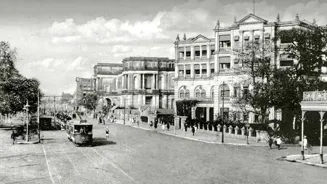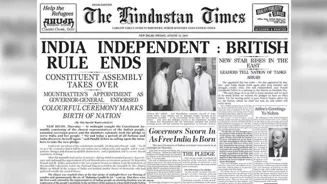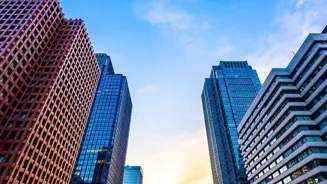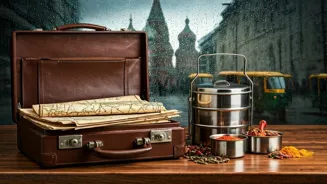The British Empire needed a throne in the East, and Calcutta rose to claim it.
We all know that before Delhi became the center of power, Calcutta was the capital
city of British India. However, it wasn't limited to that only. For a long period, this riverside port on the eastern edge of the subcontinent was the second-most important city in the British Empire, second only to London itself. It’s a fact that rarely gets the attention it deserves. Today, Kolkata (as the city is now known) is more likely to be invoked as a symbol of post-industrial decay or stubborn nostalgia. And if you happen to be Bengali, chances are you’ve heard enough of those things. But interestingly, this was once a place where literally fortunes were made, and where colonial ambition crystallized into power.

Now, what made Calcutta such a magnet for British attention and investment? Why, particularly this city, and not Bombay or Madras, in those crucial early decades? Well, the answers lie in a heady mix of many things, especially geography and culture.
Geography as Destiny
Calcutta’s unlikely ascent began with the river. Set along the eastern bank of the Hooghly, just over 100 miles inland from the Bay of Bengal, it offered the city a rarity in South Asia’s chaotic geography. In 1690, Job Charnock, a merchant and administrator of the East India Company, chose this spot (a trio of villages named Sutanuti, Govindapur, and Kalikata) for a trading base. The selection was pragmatic because, unlike Surat, which bristled under Mughal regulation, or Madras, exposed to seasonal storms, Calcutta offered a sheltered port with direct access to Bengal’s fertile interior. Bengal's textiles, indigo, rice, and eventually opium made it an irresistible prize. And the Hooghly, as historian P.J. Marshall notes, became the “natural emporium” for this wealth. So, it would not be even an iota of an exaggeration to say that the river carried Calcutta’s fortune. And in time, it carried the British Empire’s ambitions with it.
The Empire Moves In, and Calcutta Becomes Capital
The real transformation began not in the markets, but in the corridors of power. In 1772, the British declared Calcutta the capital of their Indian operations. Murshidabad, the old Mughal capital of Bengal, was out (that's a whole different story). Calcutta, with its red brick buildings and rising tide of English clerks, was in. Under Warren Hastings, the city became the seat of the Governor-General, and with it came the Supreme Court, Fort William College, and a growing bureaucracy trained to understand and administer India. Hastings believed the British power in India had to be centralized, and Calcutta was the place to do it. The Regulating Act of 1773 gave Bengal’s Governor-General superiority over his Bombay and Madras counterparts, further concentrating control. “Calcutta,” as William Dalrymple later put it, “was the cockpit of British power in Asia.”

Trade and Industry
By the 19th century, Calcutta was the British Empire's economic engine. Opium was the first great fuel. Grown in the fertile fields of Bihar and Bengal, it was shipped from Calcutta to Canton, where it funded Britain’s voracious appetite for Chinese tea. By the 1850s, this trade had grown so profitable that it essentially paid for Britain’s imports from the East.

Then came jute. The Crimean War disrupted supplies of Russian hemp, and Calcutta seized the opportunity. By 1882, more than 20 jute mills were operating along the Hooghly, employing tens of thousands of workers. The tea trade from Assam was booming, and Calcutta’s docks were soon bustling with exports bound for London, Cape Town, and Hong Kong.

The city was exporting imperial power along with commodities. The Bank of Bengal (established in 1806), the Bengal Chamber of Commerce (1834), and British shipping giants like Jardine Skinner ensured that London’s financial arteries pulsed through Calcutta. By 1900, Calcutta was exporting more tea than all other South Asian nations.
The Bengal Mind
Calcutta was not only an imperial warehouse or a colonial control room. It was also a crucible of thought.
It began with the Asiatic Society, founded by Sir William Jones in 1784, a hub for scholars fascinated by India’s languages and traditions. Then came Calcutta University in 1857, and with it, a new class of Indians known as the "bhadralok" (the genteel middle class).
This was the generation that gave birth to the Bengal Renaissance. Thinkers like Raja Rammohan Roy, with his Brahmo Samaj, questioned orthodoxy and demanded reform. Writers, journalists, and philosophers debated nationalism, ethics, and identity in North Calcutta’s pressrooms.
Newspapers like The Hindu Patriot and The Statesman flourished. Theatre troupes and literary salons animated the city’s nights. In time, the very city that the British built to rule would become the forge of the ideas that would challenge that rule. As historian Rudrangshu Mukherjee wrote, “Calcutta was the furnace in which Indian modernity was smelted.”
Architecture and Ambition
British planners (eager to build a London by the Hooghly) transformed the city’s skyline. The Victoria Memorial, opened in 1921, was a marble edifice to imperial vanity. The Howrah Bridge, completed in 1941, linked east and west. The Writers’ Building, the Supreme Court, and St. John’s Church are now all symbols of the city.
By 1901, Calcutta had swelled to over a million people, making it the Empire’s second-largest city after London. Railways fanned out from Howrah Station into the Indian hinterland. British clubs like the Bengal Club maintained rigid social hierarchies, even as Indian elites began to push against them.
Calcutta’s Fall from Favor
But no city of empire stays untouched forever. As the city grew, so did its problems, especially overcrowding, sanitation crises, and outbreaks of cholera and plague. The 1857 Rebellion exposed British vulnerability. The 1905 Partition of Bengal ignited nationalist fury. Strikes, protests, and underground revolutionary groups turned Calcutta into a site of resistance as much as rule.
By 1911, the British had had enough. With nationalist sentiment rising, they moved the capital to Delhi, ostensibly for strategic reasons, but in truth, to get away from the growing unrest. Calcutta’s pride took a hit, and so did its property market.
The Gallery of H.M.S. 'Calcutta' (Portsmouth), c. 1876, by James Tissot (French artist, 1836-1902). Two fashionable dressed ladies and a young naval lieutenant, standing on the quarter gallery at the stern of a Royal Navy warship. ⚓ pic.twitter.com/IATADENwwJ
— The Long Victorian (@longvictorian2) December 4, 2024
(Credit: The Long Victorian)
And yet, it goes without saying that the city refused to recede.
Calcutta became what few colonial cities ever did. It was a city that helped build the empire and then helped dismantle it. Today, Kolkata carries the weight of its past.














